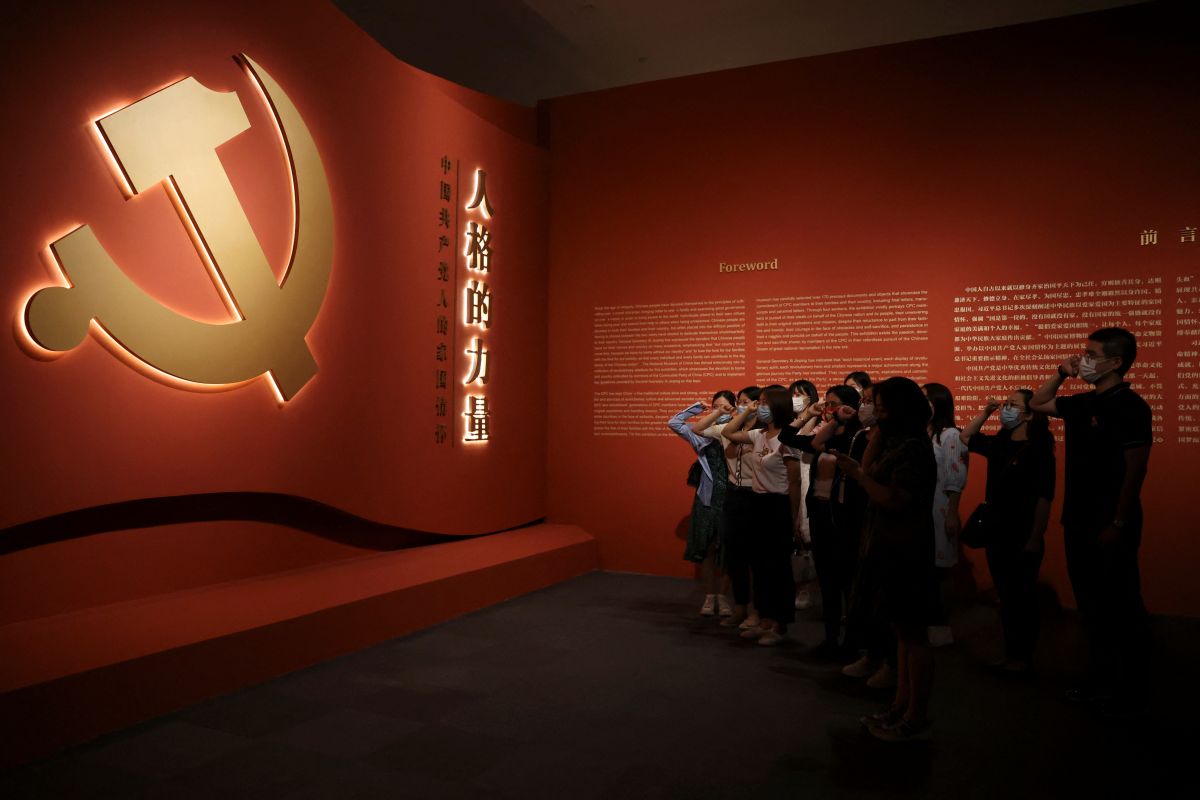China's Economic Problems Worsen: the Domestic and International Aspects
The economic rebound in China after the lifting of the pandemic restrictions at the end of 2022 was short-lived and the situation has now been deteriorating for several months, including because of a decline in consumption and exports. The current economic woes are rooted in an intensification of existing problems, including excessive debt, particularly in the real estate sector. The deflation recorded in July this year is indicative of deepening structural problems, including the current, ineffective growth model based on investment and exports. While a deep crisis in China’s economy is unlikely, the accumulation of the challenges will translate into lower growth rates in the coming years.
 CHINA STRINGER / Reuters / Forum
CHINA STRINGER / Reuters / Forum
Context
China’s economic situation was difficult in 2022, not least because of the application of zero-COVID policies, including frequent lockdowns. The lifting of pandemic restrictions at the end of last year led to an economic rebound in the first months of this year. Officially, GDP growth in Q1 was 4.5% year on year, which was above analysts’ predictions of around 4%. From May onwards, however, macroeconomic indicators, including foreign trade, retail sales and industrial production, began to deteriorate. While the officially reported Chinese GDP growth of 6.3% year on year in Q2 may seem high, it should be borne in mind that this is due to a low base effect from the same period of 2022 and was around 1 percentage point lower than analysts’ predictions. In addition, economic indicators may be overstated for political reasons. Some investment banks (e.g., Citi Bank, JPMorgan) have lowered their forecasts for Chinese GDP growth for 2023 below the 5% level set by the PRC authorities as a target for this year.
In July, Chinese exports fell by 14.5% year on year, the most since the start of the pandemic. This is mainly because of reduced demand for industrial products in developed countries, driven by high inflation and rising interest rates, and a shift in consumer preference for services, which were not available during the pandemic restrictions. China, unlike many other countries, is struggling with very low inflation. In July, it was negative (-0.3% year on year), although this is an incidental phenomenon triggered by, among other things, a large drop in the price of pork, which is popular in China. Low inflation is caused by the preference of Chinese households to save rather than spend. This may be a result of both the experience of harsh methods to combat the 2020-2022 pandemic (e.g., preventing business activity) and a lack of trust in the state, including an underdeveloped social security system. In such a situation, savings are accumulated as insurance against socio-economic difficulties. The problem of deflation and the associated low demand is exacerbated by high unemployment among youth—in the 16-24 age group, it stood at 21.3% in June. As a result, people in this group, traditionally spenders of a large proportion of their income, are cutting back on spending and delaying starting a family and buying a house.
A key challenge for the Chinese economy is the problems of the real estate sector. Already in 2021, one of the largest property developers, Evergrande, defaulted on its debts. The problem is worsening—of the 38 state-controlled publicly traded property developers, 18 have published preliminary reports showing losses in the first half of this year, compared to 11 for the whole of 2022 and just four in 2021. In early September this year, one of China’s largest companies in the sector, Country Garden, avoided default at the last minute after its creditors agreed to spread repayments over the next three years. Turbulence in the property market, which accounts for 25-30% of China’s GDP, also threatens the stability of local government finances. For many years, they have borrowed funds for investments (often underperforming) which they then repaid with money from the sale of land to developers. So-called debt rollover (i.e., paying off one loan with another) and repayment problems are emerging, threatening the stability of the financial sector.
PRC Authorities’ Actions
In response to the economic problems, Chinese government is taking prudent measures targeting specific sectors. The aim is to increase investor and consumer confidence in the Chinese economy. The limited scale of the stimulus is primarily due to the desire not to increase the deficit and the already high debt burden, especially of local authorities and the private sector.
The authorities are mainly concerned with the real estate sector. Credit conditions have been loosened for people planning to buy their first flat, and some cities such as Guangzhou and Shenzhen plan to provide preferential loans to this group. The authorities have announced the removal of price caps on housing purchases (to make it easier for developers to set prices) and the elimination of restrictions on purchases by individuals in major cities, including Beijing and Shanghai. In August, the People’s Bank of China (China’s central bank) made a small reduction in the one-year interest rate from 3.55% to 3.45%. However, it left the five-year rate, the most important for mortgages, unchanged for the time being, suggesting that the bank authorities are waiting for the market’s reaction. In addition, at the beginning of September, five of China’s largest banks, including the Industrial and Commercial Bank of China and the China Construction Bank, cut their mortgage rates.
In July, the Chinese Communist Party (CCP) Politburo, the highest decision-making body in China, announced a plan to boost consumption. This translated into government decisions to stimulate demand in, among other things, the automotive sector through the expansion of electric vehicle charging infrastructure and in tourism by reducing or abolishing fees for certain attractions. Measures to stimulate the property market are also expected to encourage increased purchases of household goods, including furniture or electronics. In turn, the central bank lowered banks’ foreign exchange reserve requirements, which is expected to strengthen the yuan, which has been weakening in recent weeks, and increase the purchasing power of Chinese households (in early September, the Chinese currency’s onshore exchange rate against the dollar fell to 7.32, the lowest since 2007). The Ministry of Finance, meanwhile, extended a tax reduction until 2027 for, among other things, small and medium-sized companies recording sales of up to CNY 100,000 per month (about $14,000). Commissions for stock market transactions have also been reduced to stimulate the capital market. At the same time, the authorities are restricting access to information, such as publication of youth unemployment statistics, which has been halted since June.
Conclusions and Outlook
Numerous economic problems, in the absence of deep reforms, including the social security and pension systems, state-owned companies, or the distribution of national income, are likely to lead to a permanent slowdown in the growth of the Chinese economy. This phenomenon will be exacerbated by long-term challenges, including demography and the rivalry with the U.S. The existing growth model is becoming ineffective, and attempts to base future growth on consumption and new technologies face structural barriers. The countermeasures taken so far mainly replicate existing solutions. They do not address the main problems of weak consumer and investor sentiment or the lack of confidence in the authorities.
The nature of the problems facing the Chinese economy means that purely economic solutions will be insufficient. Possible stimulus packages or developer bailouts will postpone a crisis without addressing its causes. The lack of transparency, including the withholding of important statistical data, may further increase uncertainty among trade partners and investors about the Chinese authorities’ policies and the true situation in the economy. This may prompt more and more foreign companies to relocate parts of their production outside China. In the long term, the Chinese economy needs to graduate to a more adequate development model, based on a strong and well-remunerated middle class, domestic consumption and better social security. Nevertheless, such changes could undermine the CCP’s power, which makes the Party unwilling to implement them.
The slowdown in China will restrain the growth prospects of the global economy, including Germany, Poland’s largest trading partner. At the same time, it is conducive to reducing inflation on a global scale. To limit the negative effects of the situation in China, Poland should strive to reduce its economic dependence on it. This concerns both direct links with China (such as supply imports) and indirect links (through trading partners, mainly those exporting from Germany to China). In the long term, a focus on greater diversification of exports will be necessary, as its current structure makes Polish foreign trade vulnerable to economic turbulence especially in Germany and indirectly in China.






